The Hidden Heritage of Andreas Gursky
A conversation with artist Berit Schneidereit
By Christoph Blank
The interaction between nature and architecture is a recurring theme in the art of Berit Schneidereit, a German artist and former master student of Andreas Gursky. In the early days of 2018, Kunstbar paid a visit to her studio to get insight into her practice, her sources of inspiration and being an artist in the age of digitization.
When did you start working as an artist and why?
That is difficult to say. When does one become an artist? I had already decided I wanted to put my creativity into play, before I started studying. Finding myself, that is to say developing my own artistic language, was a process. For the first few years, I studied in a sculpture class, which taught me to look at my work from a different perspective. Amidst the work of other artists, I constantly had to challenge my preference for the medium of photography, for working with light-sensitive materials. This discourse was very important for me and for what I am doing today.
How did you get to your current artistic practice?
Drawing, three-dimensional work and photography were part of my artistic language from early on. During a year abroad, I discovered the darkroom for myself. The first pictures I made were photograms of my hand and later of fabrics. When I started studying at the academy, this was my starting point and a technique that is still, whether directly or indirectly, an integral part of my work.
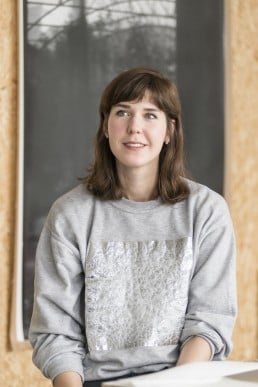
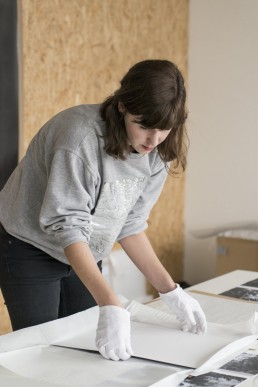
Who or what influenced you?
That is not easy to narrow down. The first photographic works such as Nicéphore Niépce’s View from the Window at Le Gras or the photogenic drawings by William Henry Fox Talbot are important reference points for me, as are the works of the Bauhaus movement, for example the Light-Space Modulator by Lazlo Moholy-Nagy. One of my favorite places in Düsseldorf is the American Hall in the K20. Seeing the works of Ellsworth Kelly and Ad Reinhardt is impressive. In 2010, I was able to see the black paintings, his final pictures, at the Josef Albers Museum in Bottrop. This exhibition definitely left a mark. But frequently, buildings or gardens do too, as part of my work is created outside the studio. I am very interested in specific places that play or have played a special role within the urban space.
You graduated in 2017 in Andreas Gursky’s class at the Kunstakademie Düsseldorf. To what extent has this made an impact on your work?
The shifting focus between proximity and distance, tiny details and the big picture still fascinates me both in terms of content and form. At first glance, there may not be any direct references in my work, but there are definitely similarities in the approach. Ultimately, his works are also part of my visual memory and had already previously made an impact on me.
What is your art concerned with? What do you want to express?
My work consists of different techniques and strategies. They share a desire to capture. An analysis of what visual space and real space communicate. To this end, I show details, peripheral spaces, which develop a special power when taken out of their context and through my interventions. In the execution, the spaces are more imaginary than real, and sometimes find themselves completely abstracted in the pictures. The interaction between nature and architecture is repeatedly discussed. It is playing with proximity and distance, reality and suggestion. Transferring the image into another medium, from the positive to the negative and back, leaves traces and mistakes that demand an attentive gaze. This process leads to a further distancing and abstraction. In the context of an exhibition, the works function as windows that expand real space into a parallel world.
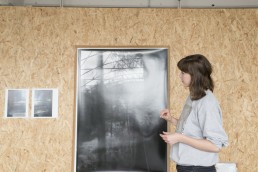
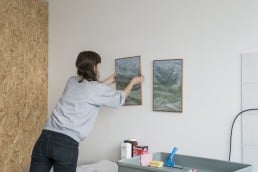

Which techniques and materials do you prefer?
I like to jump between techniques. Analog and digital photography, experimental techniques like the photogram. For my work, hybrid forms also emerge from these various stages of photographic history. I try to be as free as possible and unbiased towards individual techniques in order to find a suitable form for my work. I am not dogmatic in this respect. The medium of photography has in its development spawned many different ways of producing images which I can use for myself. Part of this process is certainly chance. Working in the darkroom gives me plenty of room for experimentation. My favorite material and starting point of all these techniques is therefore light.
Is there a particular work in which you have invested a lot of energy and care?
No, I do not think so. It may be that some work is more complicated to execute and therefore takes more time, but initially I approach all my work with the same amount of energy and feeling.
If a child asked you what you do artistically, what would you say?
Shadow drawings.
That’s interesting, because you don’t draw at all!
I’m speaking of drawing more in a metaphorical sense. The immediacy of my expression is an equally integral part of the photogram. In addition, of course, there is the fact that these works are hardly reproducible. Talbot used the term “photogenic drawing” for his early works, which I find apt.
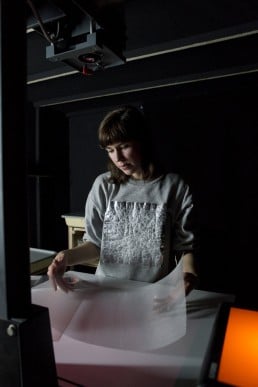
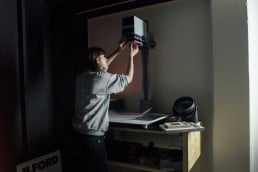
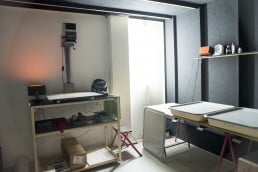
Do you collect works by other artists?
Perhaps you can’t quite call it collecting yet, but I have some works by artist friends like Vivian Greven, Laura Sachs or Sebastian Wickeroth, which I really treasure. Interestingly, so far all the works are black and white!
You are young and at the beginning of your artistic career. What are your experiences so far in the art market and how would you advise other young artists or academy graduates?
As I only graduated from the academy in February 2017, the art market is still relatively unknown to me. However, I tried to see a lot of art during my studies to get a feel for which path might be interesting for me.
To what extent is digitization changing the art market?
I find it difficult to speak for the art market. But I realize that the way in which art communicates digitally has a big impact on its reception. For me as an artist, on the one hand it is enriching, because I am confronted with a lot of art through media like Instagram and therefore see much more than I would be able to through exhibition visits. On the other hand, it leads to a certain superficiality, which I find problematic. Ultimately, it is always different to spatially interact with an actual piece of art. Aspects such as material and presence can only be grasped to their full extent in real space. Ultimately, this form of art reception undermines one’s own sensitivity.
Thank you very much for the conversation, Berit!
The interview was conducted and published by Christoph Blank, founder of the art platform and onlinemagazine KUNSTBAR (www.kunstbar.de). Images by Jennifer Rumbach (www.jennifer-rumbach.de).
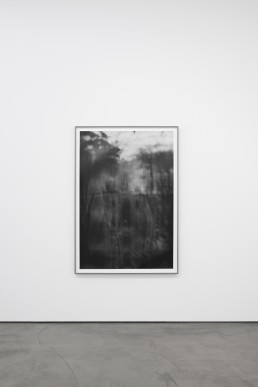
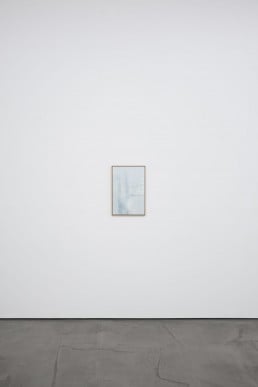
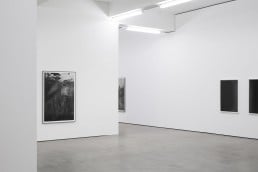

CV
Born 1988 in Frankfurt am Main
Lives in Düsseldorf
Kunstakademie Düsseldorf
Prof. Andreas Gursky / Prof. Hubert Kiecol
AWARDS & SCHOLARSHIPS
05/2017 “van – Rinsum grant 2017” by VdDK 1844, Cité Internationale des Arts, Paris
04/2017 “dHCS – studio grant 2017/19” by Kunstverein für die Rheinlande und Westfalen, Düsseldorf
10/2016 “Hogan Lovells Art Award 2016”
EXHIBITIONS
04/2018 New Positions, Art Cologne with COSAR HMT, Cologne (upcoming)
01/2018 Die große Kunstausstellung NRW, Museum Kunstpalast, Düsseldorf
11/2017 “a.fair”, COSAR HMT, Düsseldorf
09/2017 “terrain”, COSAR HMT, Düsseldorf – solo show
09/2017 Bergischer Kunstpreis, Museum Solingen
06/2017 “Two To Tango”, Sperling, München
04/2017 „Klasse Gursky“, Goethe Institut, Paris
04/2017 Kunst@McKinsey & Company, Düsseldorf
03/2017 „Nouvelle photographie de Düsseldorf“, Galerie RX, Paris
09/2016 “Sehfest”, DZ Bank, Düsseldorf
04/2016 “ATELIER”, PACT Zollverein, Essen
02/2016 Die große Kunstausstellung NRW, Museum Kunstpalast, Düsseldorf
11/2015 “proximité”, Nina sagt. Galerie, Düsseldorf – solo show
09/2105 “im Grünen”, RUNDGAENGER Galerie, Frankfurt am Main
09/2015 “Angelegenheiten”, einstosz – Die Fenstergalerie, Düsseldorf
07/2015 “trama”, the enemies project, léttretage, Berlin
03/2014 “A Process”, Neue Galerie im Höhmannhaus, Augsburg
12/2013 “BATHE BONGARD CORDING DAMM KÖHLER LEE LODONOU
OBLONCZYK SCHNEIDEREIT SUN UHRHAN WAGNER”, toom, Düsseldorf
06/2013 “der stille grund”, Kunstraum Kirchstraße 41, Düsseldorf (with Melike Kara und Talisa Lallai)
06/2013 “GERMAN KLEINFORMAT”, Lateral Art Space, Cluj, Rumänien
01/2013 “ANT!FOTO #4”, Künstlerverein Malkasten, Düsseldorf
(with Kristleifur Björnsson, Christine Erhard und Elmar Hermann)
11/2012 “Rundstedt – rund wie eckig”, von Rundstedt Kunstförderpreis 2012, Düsseldorf (Part of the exhibition)
11/2011 “KLASSE KIECOL BODENSATZ BÖHLER WERKE”, Areal Böhler, Halle 24, Düsseldorf
06/2011 Installation for Âtelier de Albuquerque, Salon des Amateurs, Düsseldorf
03/2011 “Luxemburgeffekt”, NONcon temporary, Düsseldorf (with Kaj Fischer und Ljubica Petrovic)
BIBLIOGRAPHY / PUBLICATIONS
DIE GROSSE 2018. exhibition catalog. Kunstpalast Düsseldorf. January 2018
71. Internationale Bergische Kunstausstellung. exhibition catalog. Kunstmuseum Solingen. September 2017
Janine Blöß. Kunstakademie @ McKinsey & Company #5. exhibition catalog. July 2017
Burkhard Maus. Paris: Nouvelle Photographie de Düsseldorf. menschmaus. April 2017